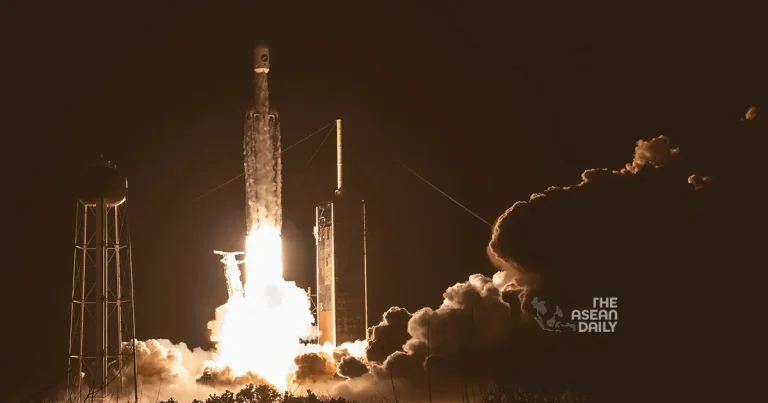29-12-2023 (FLORIDA) The United States military’s secretive X-37B robot spaceplane embarked on its seventh mission on Thursday night, marking a historic launch atop a SpaceX Falcon Heavy rocket from NASA’s Kennedy Space Center at Cape Canaveral. This mission is significant as it is the first time the X-37B has been launched on the more powerful Falcon Heavy, capable of reaching higher orbits than previous missions.
The Falcon Heavy, composed of three liquid-fuelled rocket cores, delivered a spectacular liftoff captured on a SpaceX webcast. The launch was preceded by over two weeks of delays attributed to poor weather and unspecified technical issues, emphasizing the complexity of space missions.
China’s own robot spaceplane, the Shenlong or “Divine Dragon,” had launched just two weeks prior, adding a layer of competition to the US-Sino rivalry in space.
The X-37B mission is conducted by the US Space Force under the military’s National Security Space Launch programme, and details remain classified. The Boeing-built vehicle, resembling a miniature space shuttle, is designed for long-duration orbital flights, deploying various payloads and conducting technology experiments.
Previous X-37B missions used Atlas V rockets, but this mission marked the first time it rode SpaceX’s Falcon Heavy. The upgraded rocket offers the capability to carry heavier payloads, potentially placing the X-37B in a geosynchronous orbit more than 22,000 miles above Earth, a departure from its usual low-Earth orbit.
The Pentagon has not disclosed the specific orbital destination for this mission, but hints suggest experiments with “new orbital regimes” and advancements in space domain awareness technologies. Speculation arises that the X-37B might reach highly elliptical orbits or even venture toward the moon.
SpaceX curtailed its webcast at the military’s request, leaving the exact destination undisclosed. However, SpaceX later confirmed the successful launch of the X-37B, reinforcing its position in the space launch industry.
In addition to its military objectives, the X-37B is carrying a NASA experiment to study the effects of radiation on plant seeds in space, contributing to research on cultivating crops in space for future long-term missions to the moon and Mars.
The mission’s planned duration remains undisclosed, but historical patterns suggest it may run until June 2026 or later, following the trend of successively longer flights. The last X-37B mission remained in orbit for over two years, landing in November 2022.




